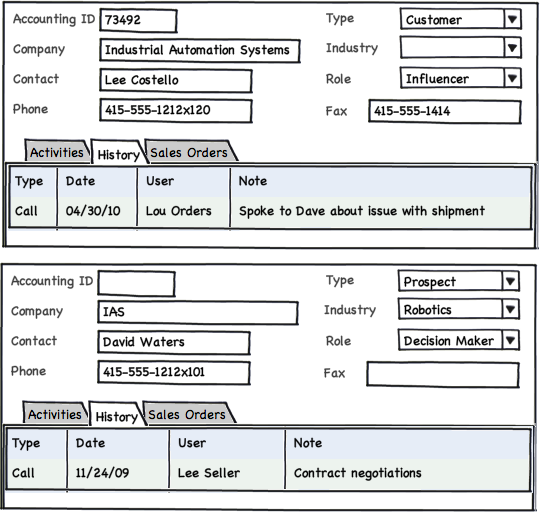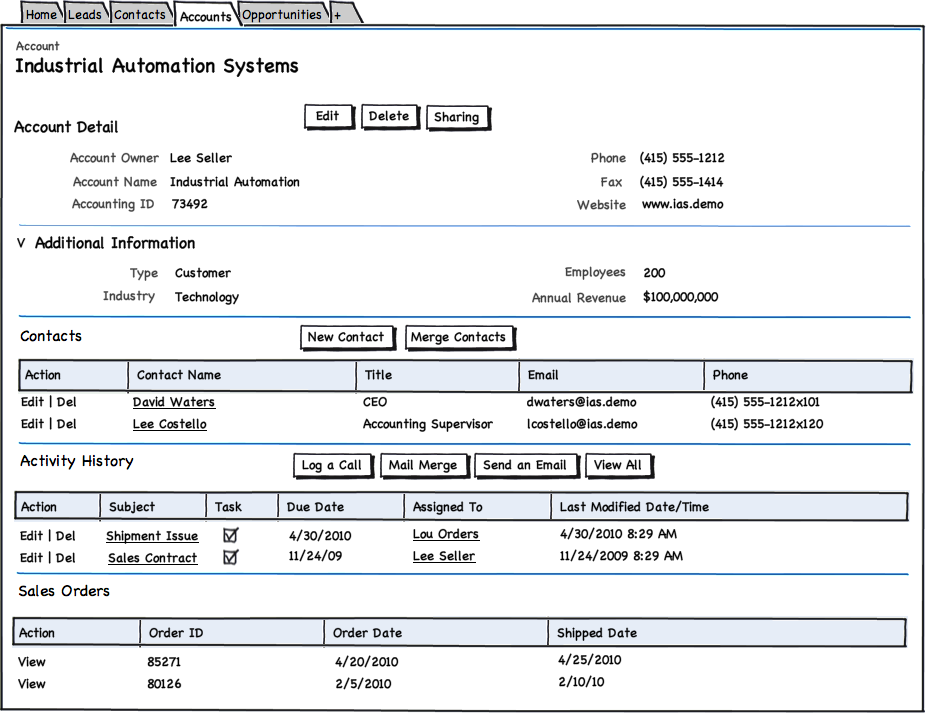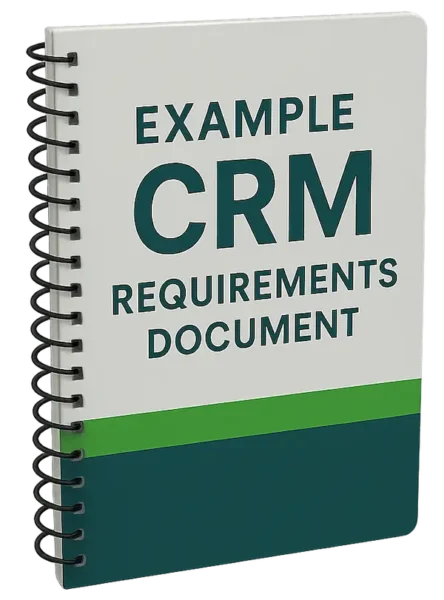Legacy contact managers, by definition, are contact-centric in their design. Each contact is a separate record and does not contain a unifying company ID. While a contact-centric structure is well-suited for B2C sales and service, it can create some limitations in a B2B selling or service environment.
In a B2B selling environment, users often need to track information about multiple individuals within the same company, as well as information about the company itself.
With a contact-centric application, contacts become placeholders for company information. However, without a unifying company record, data can quickly become inconsistent, which means there’s no single source of truth about a company.
In the simplified example below, two contacts from the same company have very different spellings of the company name. One record identifies the company as a Prospect and the other as a Customer.
The “Prospect” record displays the company’s industry, but the “Customer” record does not. The company’s fax number is in only one of the records.
Finally, to integrate accounting information, one of the Contact records had to be chosen as the record that contains the Accounting ID and is therefore the Contact record that displays the sales order history for the company.

With an account-centric application, contact information is stored in Contact records, and company information is stored in Account records. History from multiple company contacts, all roles up to the Account level.
Account-level information, such as Company Type and Industry, can be displayed consistently in all related Contact records. Sales order information from an accounting system can be associated with the company, rather than with a randomly selected contact.
This simplified mockup of a Salesforce Account view illustrates a unifying company record:

In a B2B selling and service environment, an account-centric application provides a more consistent user experience and offers better information to those whose job it is to serve prospects and customers.



